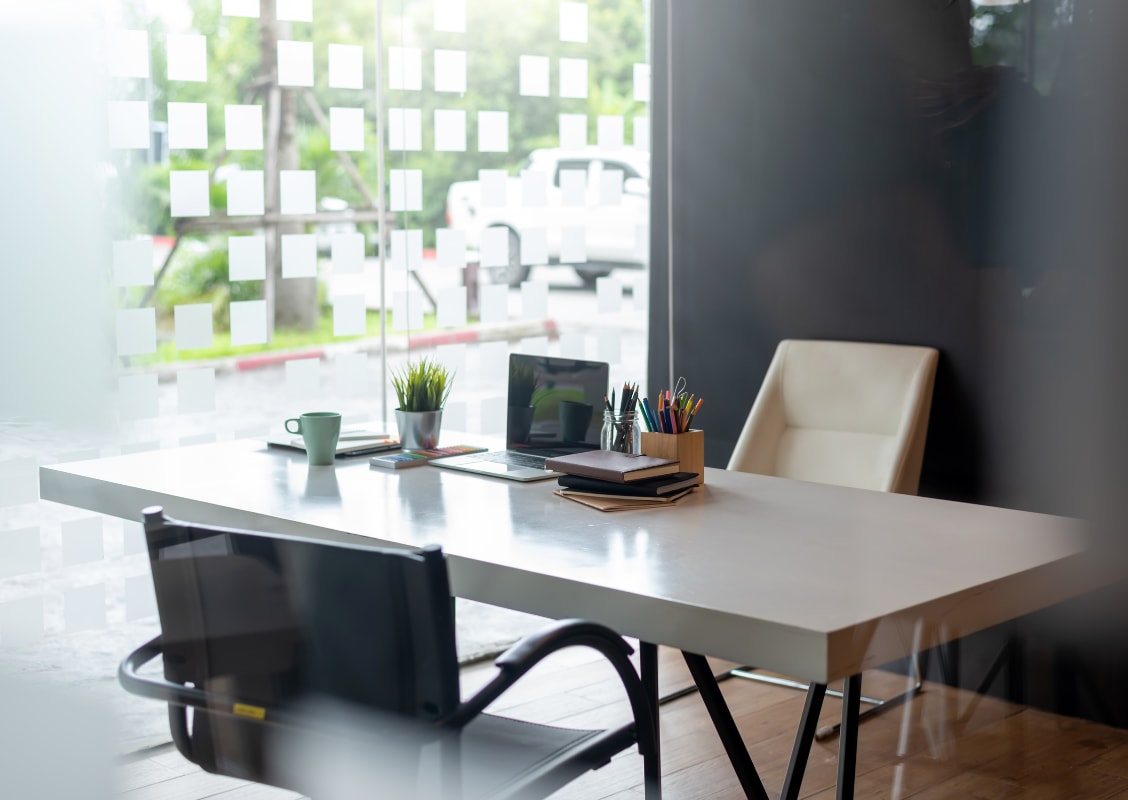A well-designed office can be the beating heart of a successful company. It's not just about splashing the company colours on the wall or positioning desks to maximise space. An efficiently designed office can boost productivity, foster collaboration, enhance employee well-being and leave a lasting impression on visitors. Unfortunately, many companies stumble on this front, making common errors that undercut these goals. Let's delve into the top five office decoration mistakes and how to sidestep them.
Mistake 1: Lack of Balance between Open and Private Spaces
In today's evolving business world, striking a balance between open and private spaces in the workspace is as valuable as discovering gold. Open spaces, often characterised by their lack of walls and barriers, promote team collaboration. They serve as an arena for a dynamic exchange of ideas, stimulating creativity and fostering a spirit of unity among team members. These open spaces are designed with transparency in mind, creating an atmosphere that encourages interaction and communal problem-solving.
On the flip side, we have private spaces. These are designated areas tailored for tasks that demand individual focus and concentration. Private spaces offer an escape from the bustling noise of collaborative spaces, allowing employees a retreat to engage in deep work. The tranquil environment in these spaces shields employees from potential distractions and interruptions, enhancing productivity on complex tasks that require an individual's undivided attention.
Despite the apparent benefits of each space type, some offices make the common error of leaning excessively towards either open or private designs. An overly open workspace can be an arena of constant distractions, with noise levels escalating to the point of impeding focus and productivity. On the other end of the spectrum, a workspace too heavily reliant on private spaces can lead to a stifling sense of isolation among employees, hampering the collaborative spirit and instilling a sense of disconnectedness.
The golden key to tackling this issue lies in integrating both space types in a seamless manner. This integration doesn't necessarily mean having a 50-50 division of open and private spaces; rather, it involves strategically customising the workspace to your team's unique needs.
Mistake 2: Furniture Mismatch with Office Layout
While it may seem appealing to fill an office with aesthetically pleasing furniture, this can often prove a misstep. Office furniture should serve function first, complementing the office layout while promoting comfort and productivity. Ill-suited furniture can obstruct workflow and impede the ergonomic support necessary for employees to work comfortably over extended periods.

Thus, customising your furniture choices to match the office layout is crucial. Consider the size and shape of furniture pieces and how they fit into your office space. Give special thought to chairs, as the right chair can significantly enhance comfort and productivity, supporting employees' physical well-being.
Mistake 3: Inadequate Lighting Harmonization
Lighting is the unsung hero of the office environment. Too often, offices suffer from harsh artificial lighting or inadequate natural light, leading to a host of issues such as eye strain and migraines. Studies have shown that lighting significantly impacts work quality and overall employee well-being.
Ensuring a harmonised blend of light involves incorporating natural light and intelligently managing its intensity, perhaps with the use of blinds or curtains. Complement this with well-positioned artificial light sources that evenly illuminate the office. This attention to lighting harmonisation can dramatically improve the ambience and productivity of your workspace.
Mistake 4: Neglecting Employee Needs
Designing an office is not a one-person task. Ignoring the needs and preferences of those who will utilise the space daily can lead to an uncomfortable and impractical environment. Employee involvement in the design process helps create an environment that accommodates their unique needs and preferences.
In essence, a successful office design provides a balance of collaborative open spaces and private areas for focused tasks. By seeking input from employees, businesses can create an office layout that supports the varied tasks required while enhancing employee satisfaction and productivity.
Mistake 5: Lack of Attention to Reception and Visitor Areas
First impressions count. The design of reception and visitor areas can significantly influence how clients, investors, and potential employees perceive your business. An unwelcoming or unprofessional reception area can send the wrong message.
Spare no effort in creating inviting lobby areas, entrances, and corridors. Consider comfortable seating, engaging visuals, and even brand-centric décor that reflect your company's ethos. Remember, a positive first impression can go a long way in attracting talent and business.
Mistake 6: Overlooking Ergonomics and Flexibility in Furniture Choices
In office decoration, it's easy to neglect the importance of ergonomic and flexible furniture. Standing desks, not-too-space-taking office desks, and height-adjustable desks, for example, are excellent additions to any workspace. These desks not only support better posture and overall health, but they also bring a sleek, modern aesthetic, contributing to a spacious office feel.
Similarly, the office chair is more than just a place to sit; it's a significant factor in employee comfort and productivity. Ergonomic chairs, which support the spine's natural curvature, reduce strain and help prevent long-term health issues. Plus, they come in various styles and designs that can enhance your office's overall aesthetic.
In essence, a beautifully decorated office should also be a functional one. Integrating ergonomic and adjustable furniture, like standing desks and office chairs, is a key element in achieving this balance.
Conclusion
In conclusion, office design is a pivotal element of any business, influencing productivity, morale, and perception. Avoiding these five common mistakes can make your office a vibrant, productive space that employees enjoy and visitors admire. Implementing these solutions may seem daunting, but with careful planning and perhaps some professional advice, you can create an office environment that truly reflects your company's ethos and drives its success.